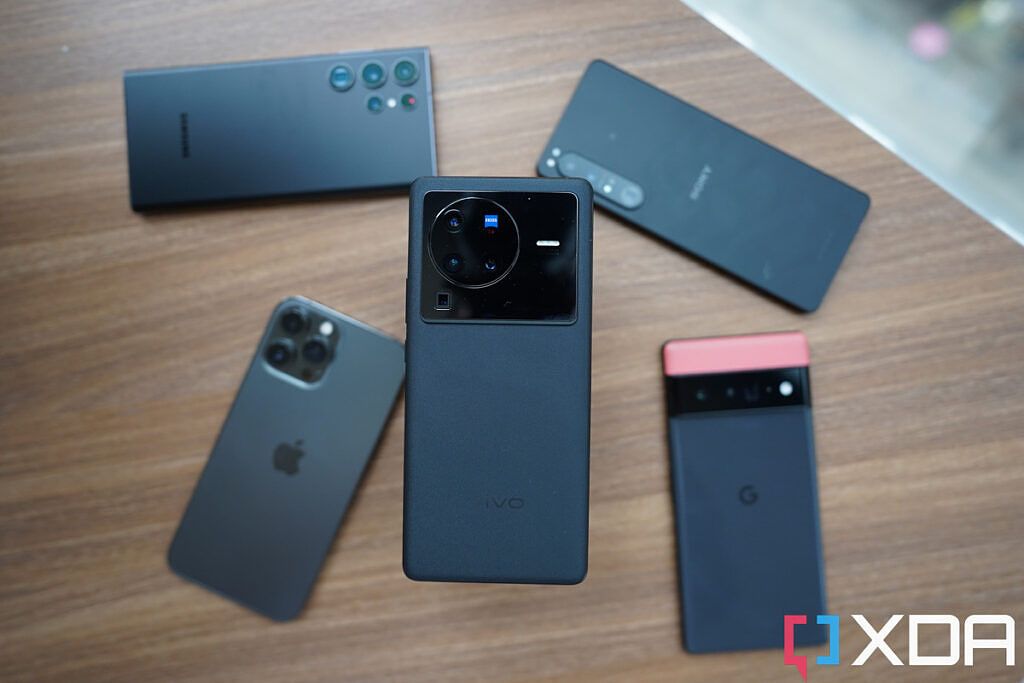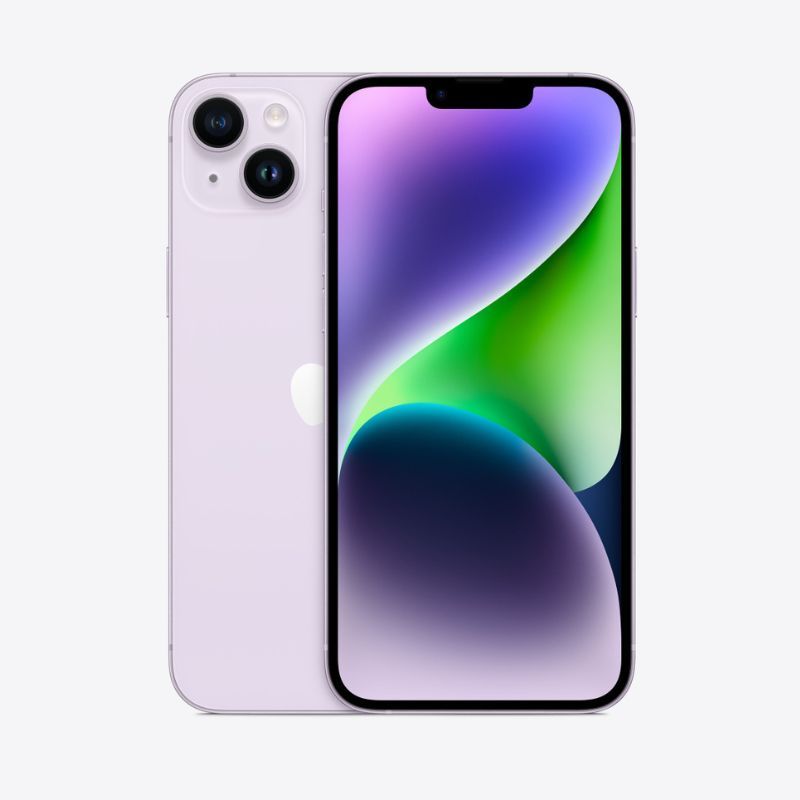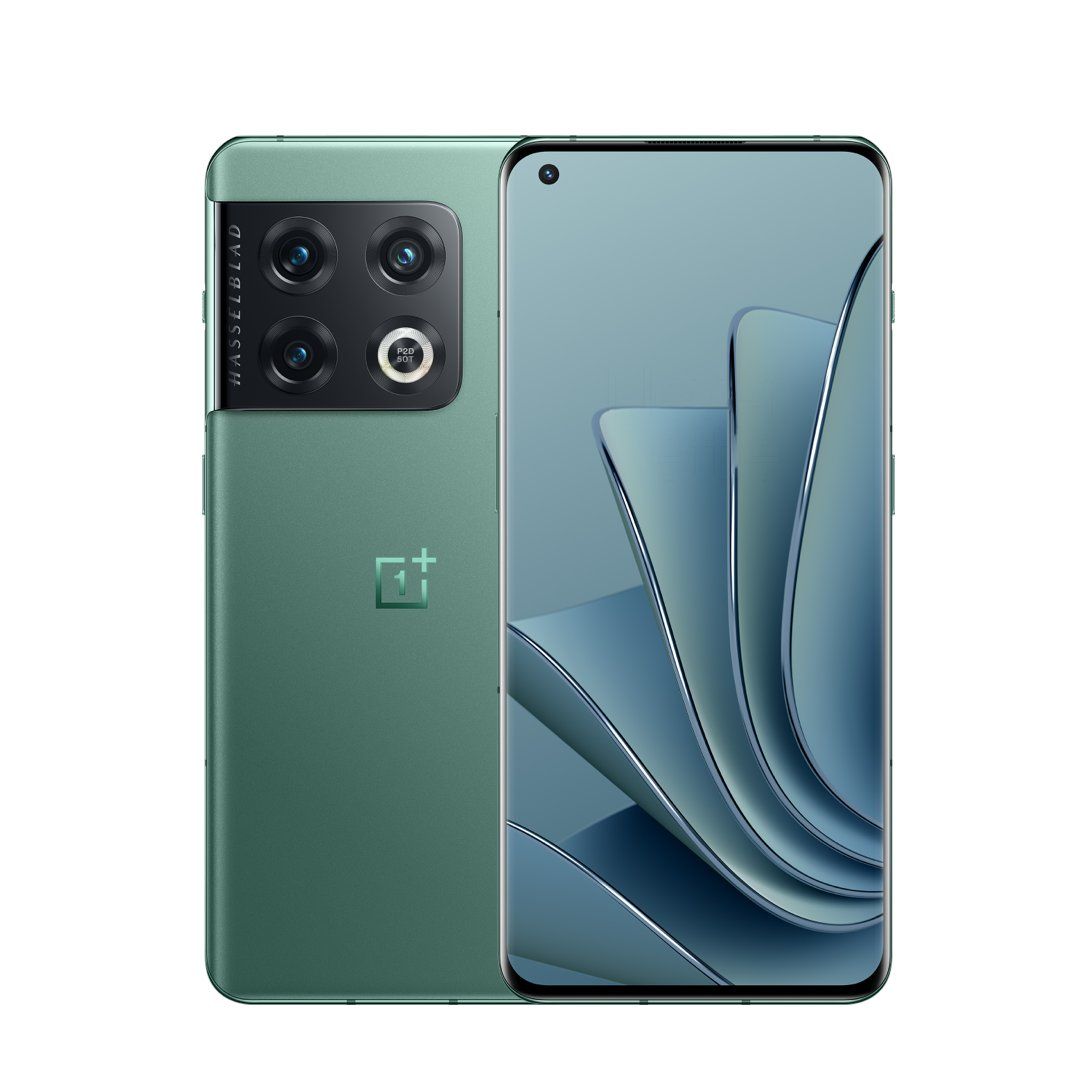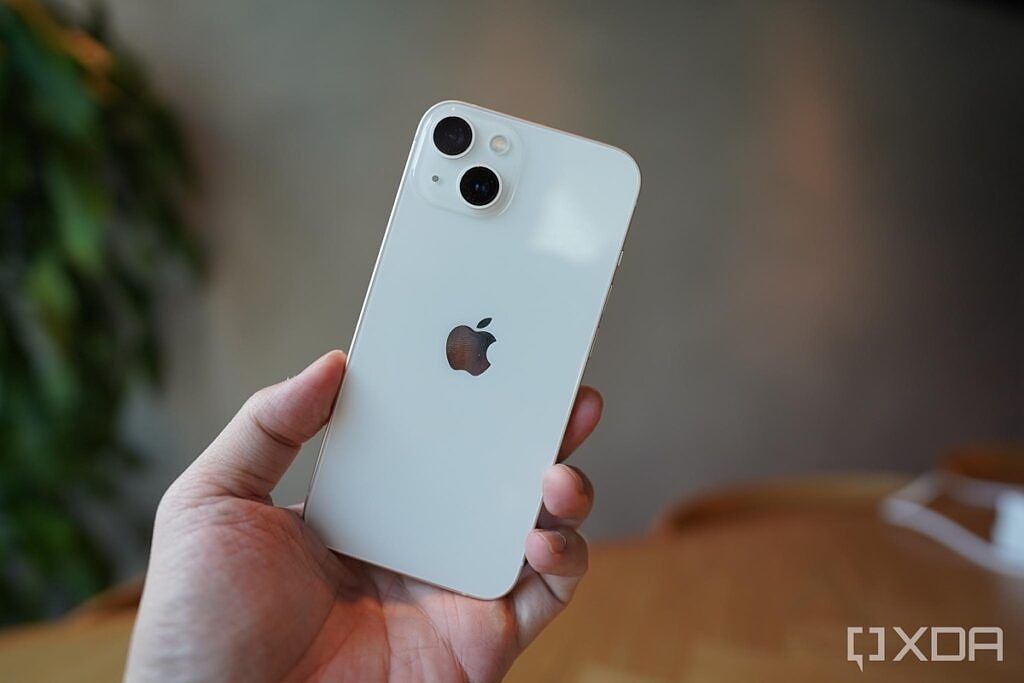This has been a great year for smartphones so far — conventional slab phones are all extremely polished, and foldables are coming into their own. So if you’re looking to upgrade your phone, now is as good a time as any. We here at XDA test almost every smartphone on earth, so here’s our expert guide on the best smartphones — covering both the best Android and best iPhone — depending on your budget or need!
Navigate this article:
Best Overall Smartphone: Apple iPhone 14 Pro

Picking the iPhone 14 Pro in this spot was a very tough decision because there are a lot of worthy challengers. And honestly, for me specifically, I’d rather use the bigger iPhone 14 Pro Max or the Xiaomi 12S Ultra over the iPhone 14 Pro, but this list must be written for the general public in mind, and for most people, the iPhone 14 Pro is the best combination of performance, value, and availability.
I personally like the Pro Max model this year because it has epic battery life, and the Dynamic Island cutout takes out less screen space on the larger model. I also think the Xiaomi 12S Ultra’s 1-inch sensor still captures more organic photos. But the Pro Max may be a tad too big for those with smaller hands, and Xiaomi’s phone only sells in China. So for most readers as general advice, the iPhone 14 Pro takes the crown as the best phone they should be buying if they do not have any specific preferences and just want a really solid all-rounder device.
There’s a lot to like here, starting with the removal of the notch in favor of a pill-shaped cutout. Apple has designed a new UI — the aforementioned Dynamic Island — that gives off the illusion that the cutout can change shape and size depending on what you’re doing with the phone. Play music, for example, and you will see the album cover art and a music wave bar next to the cutout. Navigate on Apple Maps, and you’ll see an arrow on the island directing you to where you should be heading. Not everyone is going to love this new UI but many of us think it’s clever and potentially improves how we access the myriad of information on our phones.
Next, Apple also improved the camera performance this year, giving the iPhone 14 Pro and Pro Max a new 48MP camera that is used to shoot pixel-binned 12MP photos. The image sensor has also increased in size for the main and ultra-wide camera, so the iPhone 14 Pro and Pro Max won’t have to resort to night mode as often. Video stabilization also got a huge improvement with “Action Mode,” which is a form of EIS that works wonders. While it’s debatable where the new iPhone ranks in the still photography department, it is absolutely the video recording champion.
There’s also the new Apple A16 Bionic, which is by far the most powerful silicon in mobile, and it is very energy efficient. I already said the iPhone 14 Pro Max has epic battery life, but the iPhone 14 Pro is no slouch either, able to finish a full 12- to 13-hour day of heavy use with some juice to spare. This is despite the fact the iPhone 14 Pro has a new Always-On Display that’s quite literally always on.
All of these parameters come together to make the iPhone 14 Pro an ideal candidate for the best phone you can buy. Of course, if you’re an Android fan, we’d recommend you take a look at our best Android smartphone list. But if you’re a general consumer looking for a phone that will work excellently, last you for years, keep its resale value, and have a strong hardware and software ecosystem around it, then look no further than the iPhone 14 Pro.
The iPhone 14 Pro is the best all around smartphone for most people due to its performance, price, availability, and resale value down the line.
Best Affordable Premium Smartphone: OnePlus 10 Pro

This category is different from the above “best overall” category in that this is no longer looking at it from an average consumer perspective. This category is instead for people who follow the smartphone market closely and want a phone that offers the best combination of specs, features, and value. And yes, some will surely take issue with us calling an $899 phone “affordable,” but do keep in mind this section is for an affordable premium phone, meaning it’s for someone who wants a high-end flagship phone without going too crazy, and $899 in this category is on the lower end.
Anyway, the $899 OnePlus 10 Pro is our choice in this spot. It’s got a brilliant 120Hz LTPO 2.0 OLED display that’s almost as good as the Galaxy S22 Ultra’s (it falls short in peak brightness by a hair), premium build quality, excellent haptics, and a really strong main and ultra-wide camera. In fact, the only area in which the Galaxy S22 Ultra clearly beats the OnePlus 9 Pro is in zooming prowess. But then the OnePlus 10 Pro charges much faster and costs almost $300 less.
As a standalone device, without comparing it to other phones, the OnePlus 10 Pro offers a great package. OnePlus has built its reputation over the years as a brand that focuses on being “fast” and that theme continues with the 10 Pro. The Snapdragon 8 Gen 1 is one of the best smartphone SoCs on the Android side of things so its performance is top-notch. While OxygenOS has lost a bit of its own identity in the past year — it now shares a lot of DNA with OPPO’s ColorOS, it is still one of the smoothest and fastest UI around.
Apart from performance, another thing that’s really fast on the OnePlus 10 Pro is charging the battery. In the US, the OnePlus 10 Pro gets a 65W charging brick in the box (while internationally, the phone gets an 80W brick — this difference is due to regional voltage issues, but rest assured, the charging times are negligible between the two.) From our testing, the phone’s 5,000 mAh battery can charge from 0-100% in 34 minutes.
The OnePlus 10 Pro, at $899, is one of the more affordable phones with a top notch 120Hz LTPO OLED screen, Snapdragon 8 Gen 1, and a fully featured camera system.
Best Large Foldable Smartphone: Samsung Galaxy Z Fold 4

Last year’s Galaxy Z Fold 3 corrected a lot of initial concerns about foldable phones — Samsung managed to add water resistance while shedding weight and lowering the price. This year, the Galaxy Z Fold 4 makes mostly iterative changes, and while each change is relatively small, together they make up more than the sum of their parts and further polish an already very refined foldable.
This year, Samsung shrunk the hinge protrusion a bit, so that the Fold 4 is a bit more comfortable to hold in folded form. What’s more, Samsung gave those precious few millimeters saved to the screen, so the Fold 4 has a slightly wider screen than the Fold 3. Samsung also further shed weight to 263g, making for the second lightest large screen foldable around behind the Xiaomi Mix Fold 2.
The cameras also got some much-needed improvements — Samsung upgraded the Fold 4’s main sensor to a 50MP, 1/1.55-inch sensor which drastically increases light intake. Compared to the Fold 3, the Fold 4 brings a quite noticeable improvement in main and zoom camera photography. The 3X zooms lens here, in particular, is a huge jump over the 2X lens from last year.
Samsung also refined the software to allow the Fold 4 to jump into multi-tasking mode a bit easier. Previously, it took three taps to go into the split-screen mode, now you can do so with one tap in some instances. The Fold 4, just like previous Folds, offers superior multi-tasking due to the larger screen. Whether it’s reading a press release in Gmail while taking notes in Google Docs, or running Twitter side-by-side with WhatsApp, the Fold 4’s larger screen and improved software just make the experience feel more seamless. No matter how you refer to it, it’s essentially a pocket PC that you can carry around with you to get some serious work done or enjoy consuming media like no other phone can.
All of this is handled by the Snapdragon 8 Plus Gen 1 SoC which means everything you do on the phone is fast and snappy, no matter how many apps you run. The S Pen support introduced last year is also back, so artists or notetakers can take full advantage of that larger canvas.
The internal display is a 120Hz OLED panel with an under-display front camera (UDC), giving the screen an immersive look. If you game a lot on your phone or even read a lot of e-books, you can’t find a better phone than this thanks to that huge display. This year, Samsung also upgraded the outer cover display to a 120Hz panel to make things more uniform. The phone is also now IPX8 water-resistant making it one of the most durable foldables out there.
With a Snapdragon 8 Plus Gen 1, excellent speakers, and that large 7.6-inch screen, the Z Fold 4 is excellent for gaming or movie-watching. While the cameras aren’t the best around, they’re still quite good and enough for most.
The Samsung Galaxy Z Fold 4 is Samsung taking the most polished large foldable and making it even better, with a less intrusive hinge, a new processor, and much better cameras.
Best Small Foldable Phone: Samsung Galaxy Z Flip 4

The Galaxy Z Flip 3 was one of the most stylish-looking smartphones to come out in recent years, and the Galaxy Z Flip 4 wisely brings back the exact same look — but with more color customization options. We adore the two-tone finish and the petite size when folded up. But don’t mistake small size for lack of power — this thing is, along with the Fold 4, the most durable foldable phone ever, with IPX8 water resistance and “Armor Aluminum” build material.
The Flip 4 is an awesome device for those who find modern Android phones too large and hard to pocket. Unfolded, the 6.7-inch, 1080 x 2640 display looks and behaves like any other top Samsung screen, with vibrant colors, top-notch sharpness, and a fast refresh rate up to 120Hz for buttery smooth animations.
New to the Flip 4 is the Qualcomm Snapdragon 8 Plus Gen 1 processor, which has a stronger GPU and superior battery efficiency. The latter is important, as battery life has always been a slight weakness in previous Flips. While the Flip 4 isn’t going to win any battery endurance awards, it is now possible to get all-day use provided you’re not pushing it too heavily.

Samsung also improved the software for the outer “Cover Display,” allowing users to open any app on the smaller 1.9-inch display. Sure, some apps will look silly in the cramped space, but other apps will benefit from it. You can, for example, scroll through your Spotify playlist directly from the outside screen.
While the pair of 12MP cameras here aren’t amazing hardware-wise, Samsung’s computational photography is very smart, so it will help compensate for the older hardware with AI trickery to produce shots that are usually vibrant and well-detailed. Of course, with Flex Mode, the Flip 4 can shoot in a lot of creative ways too. Overall, the Flip 4 is an iterative refinement to already an excellent small foldable.
The Galaxy Z Flip 4 is the ideal phone for those who want something more pocketable -- and more stylish.
Best Smartphone Camera: Vivo X80 Pro

We have tested a lot of smartphone cameras over the years and while most premium flagships have really capable shooters now, the best of the best is arguably the Vivo X80 Pro. From the brand new custom-built 50MP GNV sensor that packs a large image sensor and a fast aperture to the pixel-dense 48MP ultra-wide camera, to a telephoto lens that’s balanced on top of a miniature gimbal and a Periscope zoom lens that can capture 5x lossless zoom, the Vivo X80 Pro cameras have the uncanny knack for capturing a vibrant, sharp, and properly exposed shot almost every single time. Even for shots against harsh backlight, which an iPhone or Galaxy may overexpose, the Vivo X80 Pro finds the perfect balance. You can see in the samples below where Apple and Samsung blow out some light sources, Vivo’s X80 Pro found perfect exposure. The sample size isn’t small either — we have taken hundreds of photos in various tests and this is a consistent result.






Part of this is due to the V1+ imagine chip that Vivo designed itself, which grants Vivo complete control over the image processing pipeline, unlike most Android phones that have to rely on whatever ISP Qualcomm built into the Snapdragon SoC. There’s also the Zeiss T-coating that is applied to every lens of the rear-facing system, which helps reduce glare. Then you throw in a new video portrait mode that produces somewhat convincing artificial bokeh in the video, and you have a very powerful camera system that snaps instantly Instagram-able photos almost every time.
The rest of the phone is top-notch too. There’s a Snapdragon 8 Gen 1 SoC powering a gorgeous 6.8-inch LPTO OLED display, and a stereo speaker system that pumps out full audio. The 4,700 mAh battery is not that big, but it can be fast-charged at 80W, and the charging brick comes with the package. Other flagship flourishes such as IP68 water and dust resistance and wireless charging are present. The Vivo X80 Pro is a very polished smartphone all around — but it’s the cameras that help it stand out.
The Vivo X80 Pro has our vote for the best main cameras of any smartphone right now, and the rest of the package is pretty good too.
Also great smartphone camera: Galaxy S22 Ultra

While we think the Vivo X80 Pro’s main and ultra-wide camera reaches higher heights than anyone this year, if you want the most complete and versatile camera system, then that would be the Galaxy S22 Ultra, because it packs four cameras covering the ultra-wide, wide, 3x zoom and 10x zoom focal range — the latter is the best zoom lens in smartphones by some distance, with no other phone save for the very hard to buy (and Google-less) Huawei P40 Pro Plus that can even claim to have such a focal range.
The main and ultra-wide cameras of the Galaxy S22 Ultra are no slouch either — the main lens is a 108MP shooter that uses nano-binning technology to produce a super bright image (but perhaps too bright, as it’s the same over-exposure issue that has us ranking it a hair below the Vivo X80 Pro’s main camera), and the ultra-wide camera is excellent during the day, with a sweeping 120-degree field-of-view.
The rest of the phone is absolutely premium, with a 6.8-inch Super AMOLED display with the maximum peak brightness of any phone screen this year, a Snapdragon 8 Gen 1 SoC, and a large 5,000 mAh battery. There’s also the S-Pen stylus, which has migrated over to the Galaxy S series since the Note line has been retired.
Samsung’s OneUI software is also among one of the most polished in the Android space, with a good multi-tasking system and extra features such as Samsung DeX. While we ultimately gave the “best overall” title to the iPhone 14 Pro, if you have decided iOS isn’t for you, then the Galaxy S22 Ultra is the pick for the best overall phone on this list.
The Galaxy S22 Ultra is by default the king of Android phones right now, with the widest global availability and the most complete camera system.
Best Big Phone: Apple iPhone 14 Pro Max

If you want an unapologetically big phone, then the iPhone 14 Pro Max, with a 6.7-inch screen in a boxy design, is the phone you should be looking at. The iPhone 13 Pro Max was already a very big phone, and the new 14 Pro Max one-ups it by adding a bit more thickness (from 7.7mm to 7.9mm). In return, you get even better battery life over the previous model — which makes the iPhone 14 Pro easily the battery endurance champion of any smartphone right now.
The iPhone 14 Pro Max ditches the notch in favor of the “Dynamic Island,” which has been a bit divisive, but we here at XDA see it as a new and creative way to interact with all the information we get daily on our smartphones.
The camera performance has improved thanks to a new 48MP main camera that shoots pixel-binned 12MP photos, and slightly larger image sensors for the ultra-wide camera too. This means the iPhone 14 Pro Max can take in a lot of light in dark scenes. In fact, sometimes the photos may be too bright — but you can dial this down in settings. The iPhone 14 Pro Max brings back the awesome video capabilities with even better stabilization thanks to a new EIS mode Apple has dubbed “Action Mode.”
Then there’s the A16 Bionic, which is still the best SoC in the mobile industry today. For doing intensive tasks on your phone like gaming, or editing and rendering videos, the iPhone 14 Pro Max would be a perfect choice. Apart from raw performance, Apple’s hardware and software integration are unmatched in the mobile space, which means you’re getting the best hardware and software synergy in the mobile industry.
The iPhone 14 Pro Max is the biggest and best possible phone to come out of Cupertino
Best Small Phone: Apple iPhone 13 Mini

There was no iPhone 14 Mini this year, so if you love small phones, the iPhone 13 Mini is the phone for you. This thing isn’t just small — it’s tiny. It’s a phone that most people will be able to use with one hand with ease. Despite its small size, it’s still among one of the most powerful phones around, thanks to that Apple A15 Bionic chip and well-optimized iOS. Apple even improved on the below-par battery life of the iPhone 12 Mini for this year’s update.
The iPhone 13 Mini was a dream come true for small phone enthusiasts. Apple finally made a flagship phone with powerful, top-of-the-line internals that fit into a compact form factor that could easily fit into your denim pockets. Small phones were a thing of the past until apple resurrected the category with the iPhone 12 Mini. However, the small form factor brought along with it a big drawback — average battery life.
There’s a limit to the size of a battery you can put inside a small phone like the 12 Mini and that limit meant that the phone had sub-par battery life. The iPhone 13 Mini fixes this very problem and finally presents a strong case for a small phone to be used like any other phone in 2022. Battery life is the single biggest upgrade that the iPhone 13 Mini brings and that alone is a big win according to us. We now have a compact phone that doesn’t need to be around a charge by afternoon.
While the capacity of the battery has increased, what’s responsible for the increment in battery life is mainly the A15 Bionic chip from Apple. It’s more power-efficient than last year’s A14 Bionic while being one of the most powerful chipsets around. The iPhone 13 Mini is also a performance beast and can play the most graphic-intensive games with ease. You can also shoot and edit 4K 60fps videos directly from the phone along with the option to record videos in the new Cinematic Mode. The display, while still being stuck at 60Hz, now has a smaller notch and is slightly brighter than its predecessor.
To summarize, you get a pair of 12MP rear-facing cameras that, while not the most versatile system around, can capture awesome still photos and best-in-class videos. Starting at $799, this is also one of the cheaper iPhones around. If you love small phones, this one’s a no-brainer.
The iPhone 13 Mini is the phone to get if you want a small phone that you can easily use with one hand.
Second-Best Small Smartphone: Asus Zenfone 9

The Asus Zenfone 9 is a small but mighty phone — and the clear choice to get if you want a small phone that runs Android. With a 5.9-inch OLED screen, measuring 146.5 x 68.1 x 9.1 mm and weighing just 165g, the Zenfone 9 is a very easy phone to use and hold with one hand. Many of us at XDA actually think the Zenfone 9’s 5.9-inch screen is the perfect “small” size, as the iPhone 13 Mini’s 5.4-inch panel is just a bit too cramped for most modern content.
Asus didn’t just make the phone small and called it a day. Asus also gave it some unique features, such as a gimbal stabilization system supporting the main 50MP camera. This allows the phone to shoot smoother pan videos. Then there’s the right side of the phone, which houses a side-mounted fingerprint scanner/power button, volume rockers, and a touch-sensitive panel that allows the user to quickly launch apps or actions.
Under the hood is a Qualcomm Snapdragon 8 Plus Gen 1, whose energy efficiency allows the 4,300 mAh battery to power the phone all day for all but the heaviest users. All the other smartphone bits are great too — that aforementioned display is a 120Hz panel, and the ultra-wide camera produces punchy sweeping landscape shots. Heck, there’s even a headphone jack.
Asus’s software is easy to use for beginners, but also very rewarding for power users because it’s full of shortcut gestures in the form of taps, swipes, or interacting with that touch-sensitive side panel. We are also fans of how the phone looks overall, with a polycarbonate back plate that offers a sandstone-like, grippy texture, and large symmetrical camera rings.
The Asus Zenfone 9 is easily the best small Android phone around. But even if you don't factor in the size, it's still a very capable smartphone overall.
Best Affordable Flagship Smartphone: Google Pixel 6

Pixel 6 back
The Pixel 6 Pro is the better phone, but the Pixel 6 is the better option for most people. Both phones basically share most of the same hardware, with the Pro only gaining a higher refresh rate and a zoom lens. For most people, those two features aren’t enough to justify the nearly $250 price. The Pixel 6 is the biggest Pixel update in years, with a new Tensor chip custom-designed by Google that takes the phone’s machine learning capabilities to another level. The display, while 90Hz, is still a looker, with FHD+ resolution and accurate color output. The dual-camera system here features the same hardware as the Pro’s — a 50MP primary sensor and a 12MP ultra-wide.
The camera on the front isn’t as wide as the one on the Pro and the 4,600 mAh battery is also a bit smaller than the Pro’s 5,000 mAh, but other than that, there’s not a lot you’re missing out on with the standard Pixel 6.
Compared to the Pixel 5, the Pixel 6 improves considerably, especially in the SoC department. The Pixel 5 was more of a mid-range phone with performance not being its strongest suit. However, the Tensor chipset on the Pixel 6 makes it a flagship phone even in terms of performance. It’s going to be right up there with smartphones powered by the Snapdragon 888 in terms of performance. While gaming wouldn’t be as smooth, day-to-day performance is going to be a breeze.
The software on the Pixel 6 is also one of its biggest highlights. The phone comes with Android 12 out of the box and given that it’s a Pixel, you can truly enjoy Android 12 the way it’s meant to be. This means you get the new Material You theming along with the amazing AI features that Google introduced including Live Translate, Magic Eraser, Face Unblur, etc. Google also promises 3 years of Android version upgrades and 5 years of security patches for the Pixel 6. This makes the phone future-proof and you can use it for an extended period.
If you’re looking for a phone that excels especially in the camera department, and one that has clean and up-to-date software, you cannot go wrong with the Pixel 6.
The Google Pixel 6 is a polished phone with top notch cameras and Google's most pure and intelligent take on Android.
Best Gaming Phone: Asus ROG Phone 6 Pro

If you do lots of mobile gaming and want a device that can keep up, then look no further than the Asus ROG Phone 6 Pro. Between the blazingly fast and buttery smooth 165Hz OLED display that’s completely uninterrupted, Qualcomm Snapdragon 8 Plus Gen 1 SoC, large 6,000 mAh battery, dual front-facing stereo speakers, and up to a whopping 18GB of RAM, there isn’t a smartphone out there more equipped to handle mobile gaming.
Of course, because this is a gaming phone, the ROG Phone 6 Pro also has “AirTriggers,” which are functional capacitive touch panels on the right side of the phone that serve as shoulder triggers when the phone is held sideways — when you’re gaming. There’s also a rear display, named “ROG Vision,” and while it doesn’t so much — it does allow you to show off the phone by giving it more flair.
From our testing, the ROG Phone 6 is a beast of a performer, able to run games at 60fps with few drops. All the benchmarks are chart-topping too. On the camera front, you have the main system consisting of a 50MP IMX766 main sensor, 13MP ultrawide (f/2.4) and 2MP macro setup, and a 12MP selfie camera. Photos captured by this phone are sharp, punchy, and overall good, but video recording isn’t the greatest, as footage suffered from poor stabilization and dealing with sudden shifts in lighting.
As a gaming phone, the cameras are naturally not the star of the show — but the optics here can be considered solid. Asus packed the Sony IMX766 50MP sensor as a primary shooter, a 13MP ultra-wide, and a 5MP macro camera. There’s no dedicated telephoto option here, but Asus uses the 50MP sensor to shoot at 2x lossless in bright light situations. When it’s dark, it turns to digital zoom. These cameras won’t win any awards, but they’re more than good enough for most people.
The Asus ROG Phone 6 is an absolute beast of a phone, with a 165Hz screen, 6,000 mAh battery, 18GB of RAM, and the newest and most powerful chip in Android. What more do you need for gaming?
Best Budget Smartphone: OnePlus Nord N20

Retailing for around $300 ($282 if you go with T-Mobile), it’s hard to find a phone at this price point stateside that’s more capable than the OnePlus Nord N20. For a quarter of the price of an iPhone 13 Pro Max or Galaxy S22 Ultra, you’re getting a 5G-ready handset, a solid main camera, and a pretty design.
While the 6.4-inch screen is only 60Hz, it is an OLED panel so you’re getting some punchy, vibrant colors. That 60Hz panel also helps the 4,500 mAh battery last all day, and if you do need a top-up, there’s a 33W fast charging brick included with the package. There’s also a headphone jack, and 5G support too.
The main 64MP camera is fine in good lighting conditions, but don’t be fooled by the large second camera lens (and the smaller third lens): those are just 2MP sensors that don’t do much of anything. At this price point in the US though, one good rear-facing camera is acceptable.
Otherwise, the usual OnePlus zippy software can be found here, and while OxygenOS has lost some of its character, it’s still clean and minimum software compared to many other Android brands.
The OnePlus Nord N20 is an affordable Android for the US market that brings a clean design and solid performance.
One thing to note, even the very definition of “budget” differs from person to person, and a singular choice may not be able to properly appreciate the nuances of all individuals. If you’re looking for more options, here are some other great cheap Android phones for you to consider.
Best Smartphone not sold in the US: Vivo X80 Pro

There are lots of phones that can make this list, but considering we named the Vivo X80 Pro the best camera phone of 2022 so far, it’d be hard to not also slot it here in the “best phone not sold in the US” category. As mentioned, the Vivo X80 Pro is a polished tip-top Android flagship that can absolutely compete against Samsung or Apple’s best offerings in display brilliance, processing power, UI fluidity, and camera performance.
The latter, as we already mentioned, is in our opinion the best in mobile right now — just point and shoot with the Vivo X80 Pro anywhere and expect a vibrant, punchy shot with excellent contrast and details. If you live in the US and are open to importing, this is the one to consider.
The Vivo X80 Pro has our vote for the best main cameras of any smartphone right now, and the rest of the package is pretty good too.
There are a lot of good phones to choose from right now, and we hope this guide helped. We think the iPhone 14 Pro is the best all-around option for most, but the Galaxy S22 Ultra, OnePlus 10 Pro and Google Pixel 6 are also very good alternatives. We will update this list regularly so be sure to check back often — or the next time you’re on the market for a new phone.
The post These are the best smartphones to buy in 2022! appeared first on XDA.
from XDA https://ift.tt/qsPacWh
via
IFTTT























































